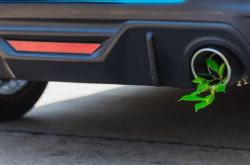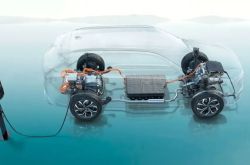Chinese vehicles' market share in Austria and Switzerland doubles that of Germany, hybrid strategy becomes key to breakthrough
![]() 11/26 2025
11/26 2025
![]() 444
444
Latest market data from JATO Dynamics, a global automotive industry market research and data analysis firm, reveals significant regional disparities in the market expansion of Chinese automotive brands in the DACH region (Germany, Austria, and Switzerland). Chinese brands have made breakthroughs in the Austrian and Swiss markets, achieving an overall market share of approximately 4%, which is exactly double that of the German market.
This disparity not only reflects varying levels of consumer acceptance of Chinese brands across different European regions but also underscores the success of Chinese automakers' flexible and adaptive strategies. Particularly against the backdrop of uneven electric vehicle (EV) transition paces in Europe, Chinese brands have swiftly shifted from solely betting on BEVs to a diversified layout that combines hybrid and electric models. This transformation has become key to their market penetration.
▍Regional Differences: Austrian and Swiss Consumers More Willing to Try Chinese Brands
Chinese automotive brands exhibit significant geographical differences in the DACH automotive market. Both Austria and Switzerland have achieved a market share of approximately 4%, double that of Germany. In the BEV segment, this gap is even more pronounced. By July 2025, Chinese brands had captured approximately 11% of the BEV market in Austria; although the Swiss market saw a slight decline, it remained at around 8% by the summer of 2025, both well above Germany's approximately 5%.
Research suggests that Austrian and Swiss consumers are more open to new brands, whereas German consumers tend to favor familiar and established brands. Additionally, as the heartland of the European automotive industry, German consumers have a stronger emotional attachment and trust in local brands, setting a higher bar for Chinese brands' entry.

▍Strategic Transformation: From BEV Dominance to Hybrid and Electric Coexistence
The entire DACH region is transitioning towards green transportation. Initially, Chinese brands generally adopted a BEV-first product strategy when entering the market. However, with deeper insights into the local market, Chinese companies swiftly adjusted their product strategies—shifting from BEV dominance to a hybrid and electric coexistence.
The Austrian market has witnessed a transformation in Chinese brands, from solely selling BEVs to gradually incorporating hybrid models. By July 2025, hybrid models accounted for half of Chinese brands' sales in Austria.
The Swiss market has shown a similar trend since the summer of 2024, with hybrid models becoming the second most popular power choice for Chinese brands, and the market share of plug-in hybrid vehicles steadily increasing.
This strategic adjustment reflects Chinese brands' keen grasp of European market realities: factors such as lagging charging infrastructure development, unstable policy incentives, and consumer range anxiety pose resistance to BEV promotion. Hybrid models, as a transitional choice between internal combustion engines and BEVs, better meet current market demands.

▍Brand Landscape: MG and BYD Perform Outstandingly
At the brand competition level, MG leads the Austrian market, followed closely by BYD, with Smart ranking third. In the Swiss market, Smart performs even more strongly, with its Fortwo and "#1" models occupying the top two sales positions.
Notably, Chinese brands' hybrid models have gained recognition in multiple segments. For example, the MG ZS ranks first in Austria and third in Switzerland, demonstrating Chinese brands' comprehensive layout across different powertrain markets. Emerging brands like Leapmotor have also begun layout (laying out their presence) in these two markets. Although early data is positive, their long-term development remains to be seen.
▍Transformation Acceleration: Economic Rationality Drives Market Changes
Looking at the electrification transformation in the DACH region, the driving factors are shifting from environmental awareness to economic rationality. Practical economic benefits such as tax incentives, more attractive registration fees, lower fuel costs, and maintenance costs are becoming the primary considerations for consumers choosing hybrid and electric models. This shift provides Chinese brands with a better market entry point.
The successful practices in the Austrian and Swiss markets offer a crucial revelation for Chinese automotive brands: in the European market, true competitiveness no longer lies solely in product cost-effectiveness or single-tech advantages but in precise insights into regional market characteristics and rapid response capabilities.

When the European EV transition slows down due to insufficient charging infrastructure, Chinese brands have not clung to a BEV-only strategy but swiftly adjusted their product portfolios, incorporating hybrid models as significant market supplements. This move not only addresses consumers' practical pain points but also demonstrates market-oriented strategic flexibility.
More importantly, the Austrian and Swiss markets, serving as a "strategic testing ground" for Chinese brands' entry into Europe, are delivering value beyond sales alone. The hybrid product strategies, localized marketing, and service systems validated here can accumulate crucial experience for entering more mature and competitive markets like Germany.
Taking a holistic view, the European expansion path of Chinese automotive brands has quietly upgraded: from initial "product exports" to deeper "strategic exports." This means Chinese automakers are no longer just exporting products but also beginning to export their system capabilities to adapt to markets and iterate rapidly.
Layout 丨 Zheng Li
Source 丨 JATO Dynamics
Image source 丨 Qianku Network







